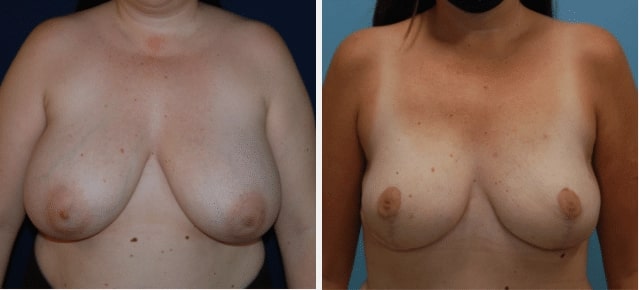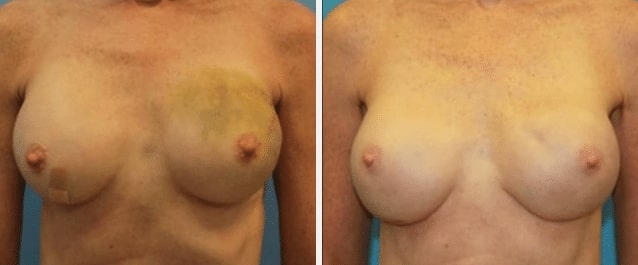What is Breast Reconstruction?
Breast reconstruction is a surgical procedure commonly performed after a mastectomy to offer patients psychological and aesthetic benefits when recovering from breast cancer. This procedure allows many women to fully return to the life they enjoyed before being diagnosed with breast cancer, with barely any signs of the disease remaining. Although the treatment of cancer is the main focus for both patient and doctor, restoring your appearance after breast cancer can often help ensure a complete recovery of body and mind.
For many women, breasts are an important symbol of femininity that helps define their self-confidence and body image. The emotional affects of an altered appearance can be as psychologically damaging as the initial cancer diagnosis. Breast reconstruction serves to restore a woman’s body to its original condition after the treatment of breast cancer. Most of the aesthetic changes caused by breast cancer treatments such as a partial or simple mastectomy can be significantly helped by breast reconstruction.
Types Of Breast Reconstruction
There are two basic types of breast reconstruction: those that use a breast implant to replace the removed breast tissue, and those that use skin and fat from another area of the body (known as autologous tissue). With both procedures, there are several different modifications that can be made to best suit the individual patient’s needs.
Breast Reconstruction Procedure
Implant-based breast reconstruction is performed similar to a breast augmentation, with the use of a silicone or saline-filled implant to replace breast tissue. A breast implant requires coverage with the patient’s breast skin, some of which may have been removed during the mastectomy. If additional skin coverage is needed, it can be provided by using a tissue expander to stretch the remaining breast skin and muscle over a period of several weeks. When the expander is fully inflated, a second outpatient operation is performed to remove the tissue expander and place a permanent implant. The permanent implant most commonly is filled with silicone gel, but saline filled implants are also available. In some cases the implant reconstruction can be done in one stage, without needing to place the tissue expander. Dr. Karp will decide which technique is best for each individual patient during the initial consultation. Skin taken from the patient’s back can also be transferred to the breast area to cover the implant.
Autologous tissue-based breast reconstruction uses a flap of the patient’s own skin and fat from another part of the body, with or without the underlying muscle, which is transported to the chest to create the reconstructed breast. This flap may remain attached to its original blood supply or can be reattached to another part of the body. There are several different types of flaps that can be used during breast reconstruction depending upon the condition of the breast area after the mastectomy. The most common technique for using the patient’s own tissue in breast reconstruction is called the DIEP (or tummy tuck) Flap. In this operation excess skin and fat from the lower abdomen is transferred to the mastectomy site and used to sculpt a new breast. No muscle is taken. Dr. Karp specializes in this procedure. He has incorporated all of the latest technology in the preoperative planning of this surgery. This includes 3D imaging of the breast to very accurately define the anatomy of the breast and CT angiography to define the blood vessel anatomy. These techniques have resulted in better surgical outcomes in less operative time.
Almost all mastectomies are performed with a skin-sparing techniques. In some cases, nipple and/or areola sparing mastectomies are performed. The type of incision that is used is made by the breast oncologic surgeon in consultation with the plastic surgeon.
Can The Opposite Breast Be Treated During The Same Procedure?
If a mastectomy has only been performed on one breast, the ideal reconstruction procedure would only require shaping and sculpting of the affected breast. However, many women need both breasts to be modified in order to achieve symmetric breasts. Dropping (ptotic) breasts are often hard to match in appearance during breast reconstruction, so both breasts can be treated during one procedure to reduce costs and recovery time for patients.
During breast reconstruction, the opposite breast is often shaped with a breast lift to achieve symmetry. This procedure lifts the breast to reduce drooping and match the newly reconstructed breast. Scars from a breast lift are usually around and below the areola and can be easily concealed. Breast reduction may be needed for women with larger and ptotic natural breasts.
Will My Reconstructed Breasts still have sensation?
The results of breast reconstruction vary depending on the patient’s individual case and the type of procedure used. While your doctor strives to achieve the most natural-looking results for your reconstructive procedure, reconstructed breasts will not have the same sensation and feel of a real breast. It is important for patients to remember this and to have realistic expectations before undergoing the reconstruction procedure.
Am I A Good Candidate For Breast Reconstruction?
Although breast reconstruction is a beneficial procedure for many women, it is not right for everybody. In order to undergo any kind of breast reconstruction surgery, women should be in good general health and able to handle the stress of a surgical procedure. Certain factors may increase your risk of complications with breast reconstruction surgery, and it may be best to postpone this elective procedure until risk factors are reduced.
Dr. Nolan Karp specializes in Breast Plastic Surgery. Please feel free to read more detailed information about breast reconstruction. You may contact Dr. Karp by using the contact form on this site or by calling the office at 212-355-5779 for a consultation.
» Contact Us for more information about Breast Reconstruction


